
The ultimate 1-day Yosemite National Park itinerary: 11 best viewpoints & hikes (post-COVID)
Last Updated on 20 August 2025
Situated in the heart of the Sierra Nevada mountains and sculpted by glaciers over millions of years, Yosemite is one of America’s most distinct national parks, its granite domes and towering sequoia unlike anything else in central California (or the country, for that matter). It’s no wonder, then, that Yosemite played a critical role in the expansive national park network we enjoy today— when Lincoln signed a land grant protecting the Yosemite Valley in 1864, it was the first time the government had ever acted to preserve a natural area for recreation and established a precedent of protecting public land that soon led to the creation of the country’s first national park in 1872 (Yellowstone National Park may have swooped in and stolen the glory, but only because Yosemite paved the way!).
Although there are countless hidden gems to explore within Yosemite, as well as longer hikes and climbs that require additional time, you can still experience many of the park’s major highlights within a single day. This 1-day itinerary for Yosemite National Park crams in 3 awesome hikes, including two domes, and showcases countless angles of El Cap, Half Dome, and the Yosemite Valley, finally concluding with sunset at popular Glacier Point.
Read on to discover absolutely everything you need to know for the ultimate day at Yosemite National Park, including when to visit, how to get there and where to stay nearby, COVID closures and park health measures, essential packing list, and a super detailed 1-day itinerary with all the best viewpoints and hikes.
Check out other posts in my 1-day National Park & Public Land series:
- Alabama Hills National Scenic Area
- Arches National Park
- Bryce Canyon National Park COMING SOON
- Canyonlands National Park
- Death Valley National Park
- Grand Canyon National Park COMING SOON
- Joshua Tree National Park
- Red Rock Canyon National Conservation Area
- Saguaro National Park COMING SOON
- Valley of Fire State Park COMING SOON
- Zion National Park COMING SOON
Planning your trip
When to visit Yosemite National Park
Located in sunny central California, Yosemite National Park is a year-round destination offering spectacular scenery and unique experiences 12 months of the year:
Summer (June to September) remains the most popular time to visit the park, especially with temperatures into the 30s (90F), but absolutely enormous crowds make this the least advised time to explore Yosemite. Be prepared to queue up for photos at popular viewpoints, and because the free park shuttle is not presently operating as a result of COVID restrictions, parking is also likely to be a real struggle during these busy months.
Autumn (September to November) & Spring (March to May) each boast comfortable daytime temperatures (20C/68F) and mostly clear skies with fewer visitors, but be warned that early mornings and nights can still be incredibly cold (0C/32F), so pack plenty of layers. This is absolutely the best time to visit Yosemite, since you’ll be able to see everything you want without fighting crowds of people and still enjoy mostly sunny days— over 75% of Yosemite’s annual visitors are here between May and October, so outside these months is your best bet!
Winter (November to February) can also be a good time to visit Yosemite, with cooler days and the lowest number of visitors, but expect the nights to be below freezing and for short daylight hours to somewhat limit your itinerary. There’s also a distinct possibility of snow in the winter, which closes Tioga Road and Glacier Point Road (not plowed beyond the Badger Pass Ski Area) usually around late November.

Buying a parks pass for Yosemite National Park
As with the entire NPS network, there are fees associated with visiting Yosemite National Park. If you are only exploring the park for a single week and not planning to visit any other national parks in the next year, you can purchase a 7-day access pass for $35USD at the ranger station (entrances at Big Oak Flat, Arch Rock, South Entrance, Tioga Pass), which covers all people within your car.
If you plan on visiting more than 3 US national sites in the next 12 months, it’s actually cheaper to get an annual parks pass for $80USD, accepted at all 63 national parks and thousands of other national monuments and forests around the country.
Purchase your America the Beautiful Pass onsite at any of the park’s 4 visitor centres (Valley Visitor Centre, Big Oak Flat Information Station, Wawona Information Station & Tuolumne Meadows Visitor Centre), at Recreation.gov, or even in-store or online from outdoor retailers like REI.
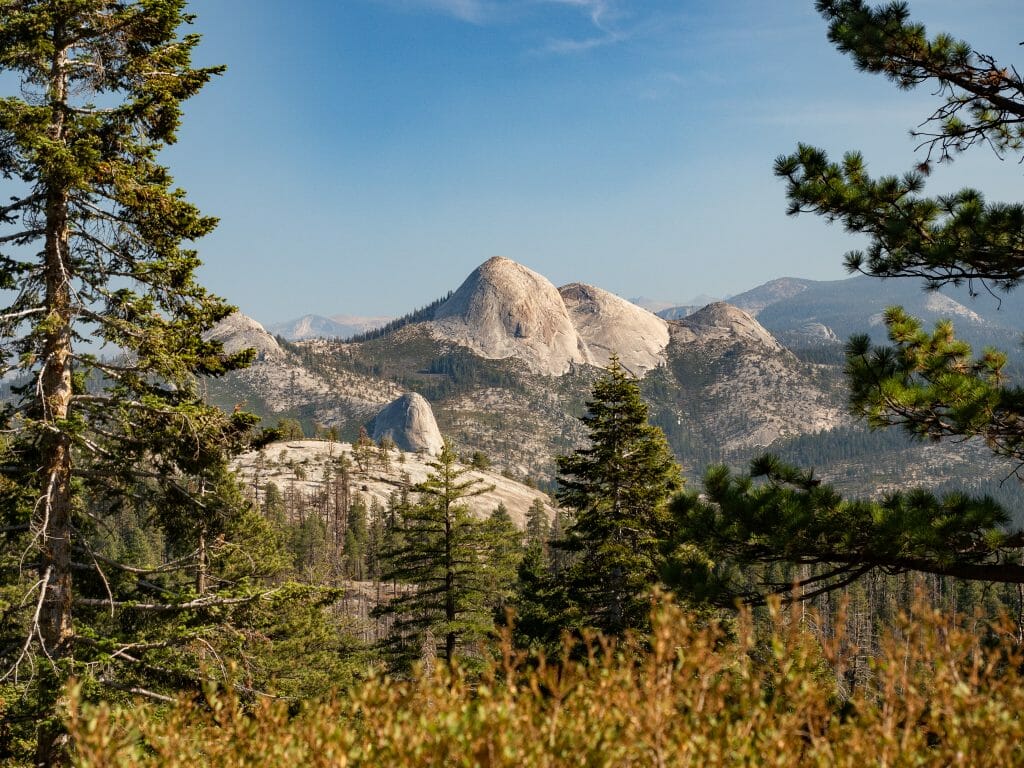
COVID-safe in Yosemite National Park
In response to the COVID-19 pandemic and in light of public health advice from the CDC, the National Parks Service has implemented a number of health and safety measures across the entire network of US parks, mostly to minimise proximity between travellers and prevent the contamination of shared surfaces.
As of early 2021, Yosemite National Park is open with a few restrictions:
- Due to stay-at-home orders in California, Yosemite is only open for DAY USE (8am to 5pm) as of January 2021.
- All travellers to the park are discouraged from interacting closely with people outside their party. Obviously this is difficult to enforce, but try to maintain a safe distance (2m) from other travellers at viewpoints, campsites, and on the trail.
- You are not required to wear a mask while hiking, but are encouraged to do so when it’s not possible to physically distance from people outside your party. I’d estimate about 50% of people at viewpoints were wearing masks during my November 2020 visit.
- The Valley Visitor Centre is currently CLOSED, along with Yosemite’s 3 other visitor centres, but you can still get a map from the ranger station when you drive through.
- All other hikes and viewpoints within the park are open as normal, including Tunnel View, Glacier Point, and Sentinel Dome. Popular trails can still be busy, so use common sense and respect your fellow travellers.
- Public restrooms are open throughout the park and hand sanitiser is provided.
- If you are feeling unwell, DO NOT VISIT! Follow local public health guidelines and get tested before visiting the national park.
For the latest updates on trail closures and COVID safety practices within Yosemite National Park, visit the NPS website.

Getting to Yosemite National Park

The most direct way to reach Yosemite National Park is by flying into Fresno-Yosemite International Airport, hiring a car, and making the 2-2.5hr drive north to either the Arch Rock entrance (most convenient) or the Big Oak Flat entrance (add 30min to your travel time) into the park.
Access is also possible via San Francisco (3hrs), Oakland (2.5hrs), Sacramento (2.5hrs), and San Jose (3hrs), and these larger airports can often be cheaper, so I’d recommend checking around for the best flights using Skyscanner. If you are travelling from any of these cities, note that the Big Oak Flat entrance is far more convenient and will save you as much as 1hr of travel time compared to the Arch Rock entrance!
Getting around Yosemite National Park
Although there is typically a free shuttle operating through Yosemite National Park, this has been temporarily suspended due to COVID and therefore the only way to really explore the park at present is to drive yourself.
The most significant downside to the shuttle being out of commission is that the park can be an absolute zoo with thousands of cars vying for fairly limited parking space, so this makes early planning very important until the shuttle is back up and running. During my recent visit in November, there was more than adequate parking, so visiting mid-week, avoiding holidays, and travelling during shoulder season can be a great way to explore without the crowds.
Make sure to pick up a free map when you come through the entrance, as there is limited mobile reception within the park! Most viewpoints and hikes are extremely well signed, but it helps to have a paper map to plan your visit. If you miss grabbing a map (outside of staffed hours; typically 8am-5pm) or prefer to use your phone, there’s a downloadable version of the NPS map available here and I’ve also marked all my recommended stops on a handy Google Map (which you can save to your phone) in the itinerary section below.
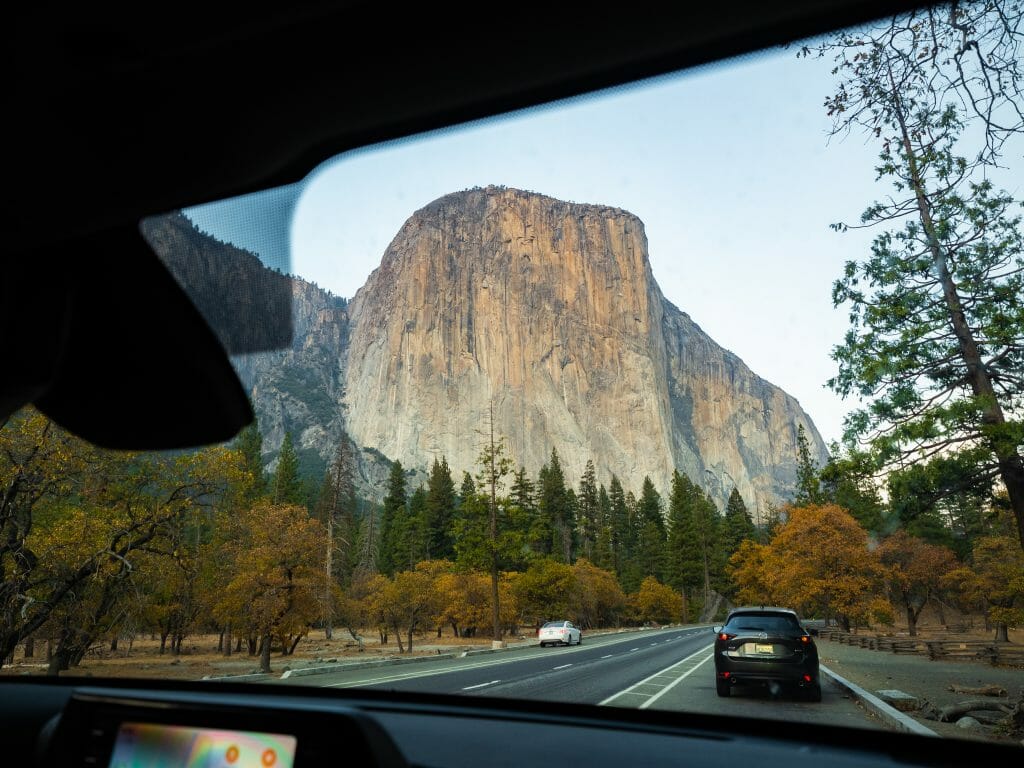
Where to stay near Yosemite National Park
If you’re hoping to stay overnight either before or after your day in Yosemite National Park, there are heaps of accomodation options available both inside and outside the park, ranging from basic camping to comfortable hotels and lodges.
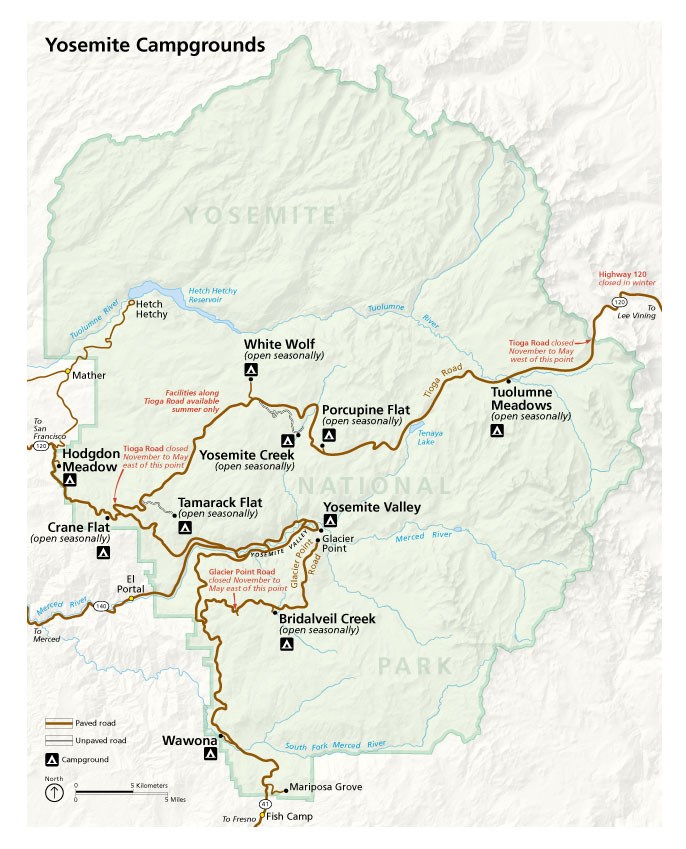
From a cost perspective, I’d really only recommend staying in Yosemite as a camper, since you’ll pay a substantial premium for hotels and lodges within the park. The most convenient option outside the park is the little town of Groveland, a quick 15min drive from the Big Oak Flat entrance, but this too will cost you! If you’re happy to drive a bit farther, the cheapest hotel options will be just beyond Groveland in Sonora (1hr) or even out in Modesto or Stockton (under 2hrs).
- There are 13 campsites within Yosemite National Park, about half of which require a reservation and the other half of which you can just rock up at. The most convenient campsites for this itinerary are those located at the southwest end of the park, specifically Wawona (reservations required; $26 per site) and Bridalveil Creek (first-come; $18 per site).
- Saddlebag Lake campground | This is a pleasant campsite with very basic facilities just outside the boundary of Yosemite National Park (near Lee Vining), which also offers a fantastic starting point for climbing Mt Conness; pay on arrival, $22 per site (20 total sites available)
- Groveland Hotel | If opting to stay in Groveland, this charming and conveniently located hotel is a great choice; double rooms start at $280.
- Historic Sonora Inn | An excellent and reasonably priced option in Sonora, offering free breakfast and onsite parking; double rooms start at $100.
Packing list for Yosemite National Park
Although this is not intended to be a fully comprehensive packing list, here are some absolute essentials to pack for your day exploring Yosemite National Park:
- Day pack | I love my REI Flash 18 summit pack for short hikes in the national park
- Water bottle | Plan to carry a couple of litres in the car and on longer hikes, as there is no water available in the park and it can get HOT; this is an awesome bottle with a built-in filter
- Snacks | To maximise time exploring, you need to pack food for snacks and lunch, as there is nothing available inside the park; if you plan to picnic, it can also be great to bring compact camping chairs like these awesome REI Flexlite Camp Chairs and a small table
- Camera (+ tripod if you’re trying to capture sunrise and sunset shots)
- Hat | I wore my Akubra Traveller through all of the national park and loved the sun coverage (not to mention all the compliments!); this is an Australian-made hat, but you can find it online at select retailers in the US and it is SO worth the money
- Boots or sturdy walking shoes | You can explore most of Yosemite in sturdy walking or hiking shoes, but I personally prefer boots when walking on sand/rock slabs and did all of the hikes on this itinerary in my square-toe 1306 Blundstones (also from Australia, but available in limited styles online in the US)
- Layers! | In autumn, spring, or winter, it is absolutely essential to have lots of layers, as temperatures can vary widely from early morning to mid afternoon; during my November visit, I would start out the morning in a down jacket, mountain jacket, fleece jumper and often be down to a t-shirt by midday
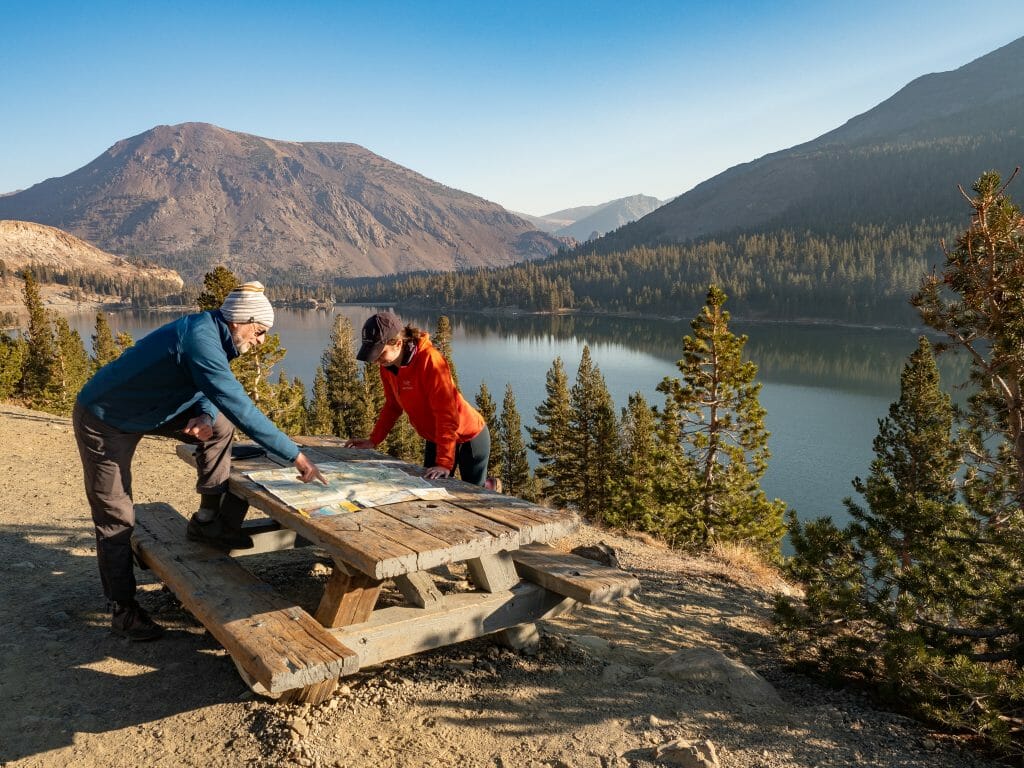
*1-day Yosemite National Park itinerary
The following itinerary packs the highlights of Yosemite National Park into a single day and is suitable for most times of year, excluding winter (from late November to May) when many roads within the park are closed due to heavy snowfall.
Of Yosemite’s 4 entrances, Big Oak Flat is the most convenient for this itinerary (and quickest for anyone travelling from the north or west), but you can also enter via Arch Rock and explore all the same viewpoints and hikes in the same order as listed here.
The first half of the day, you’ll follow Tioga Pass Road northeast as far as Tioga Lake Overlook (just outside the east entrance) before retracing your steps and turning onto Glacier Point Road— the layout of the park and its main roads necessitate some backtracking, but rest assured there’s always plenty to see from the car window even when travelling along the same road twice!

1 | Olmsted Point
After entering Yosemite National Park at Big Oak Flat and cruising about 1hr down Tioga Pass Road to the east, your first stop of the day is at Olmstead Point.
This is an absolutely awesome lookout, named for the well-known landscape architect Frederick Law Olmsted who designed Central Park in NYC, and offers sweeping views over Half Dome and Cloud’s Rest, all visible right off the side of the road. There’s a very short walk you can do in the area (600m/0.4mi) and I’d recommend at least exploring the length of the lookout for views in all directions.
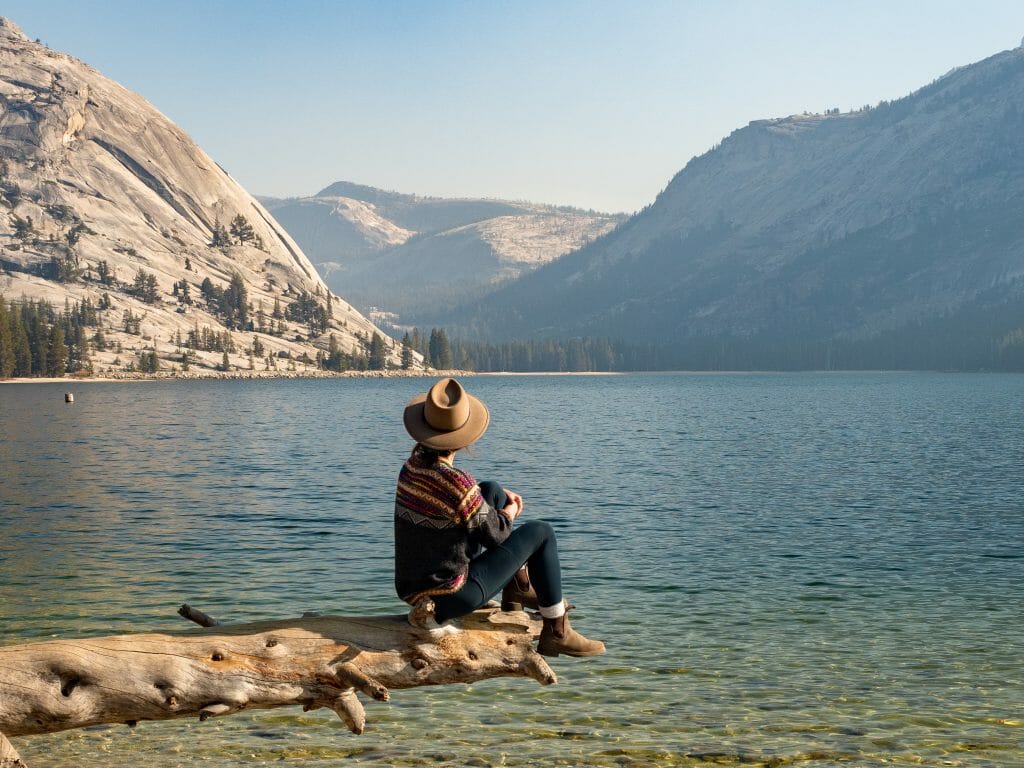
2 | Tenaya Lake
From Olmstead Point, it’s only a few short minutes up the road to the shores of beautiful Tenaya Lake, a mile-long alpine lake named for the chief of the native people who inhabited this area before being driven out by California state militia in the 1800s.
There are picnic tables here if you fancy a mid-morning snack, excellent swimming access from the sandy beach, and fantastic views of Yosemite’s characteristic granite in the background.
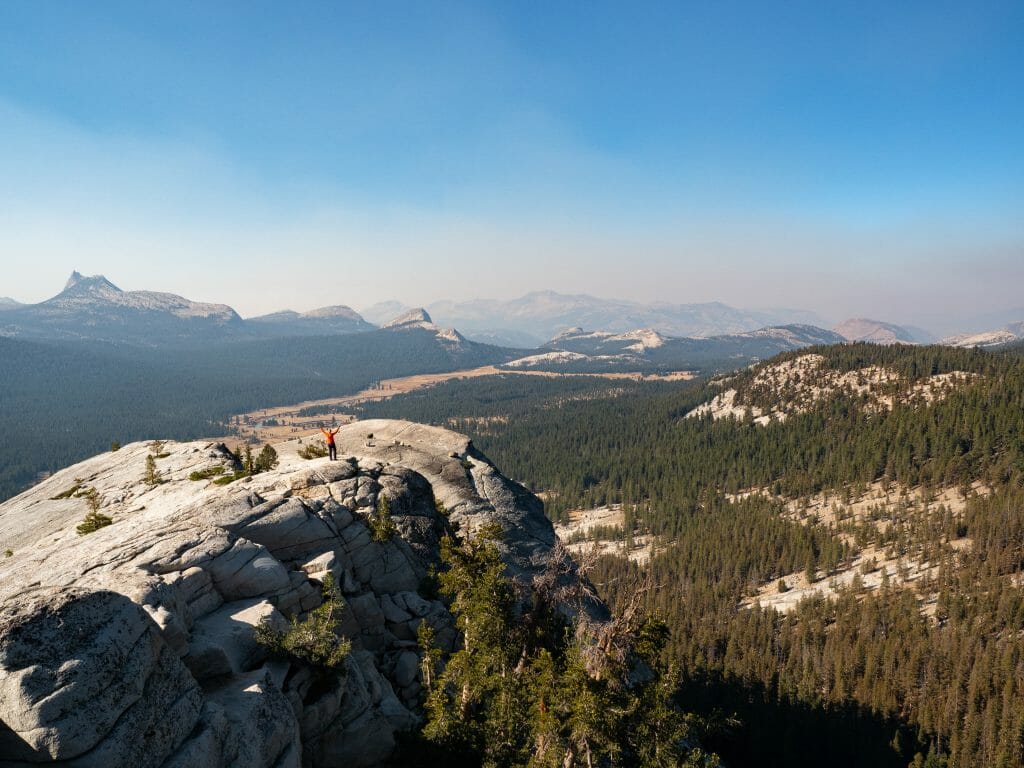
3 | Lembert Dome
3.5km / 2.2mi return | 190m / 620ft elevation gain | 1hr
Drive a further 10min along Tioga Pass Road to reach the parking area for Lembert Dome, a lesser known but no-less-fantastic hike up one of Yosemite’s massive granite boulders.
Allow 1hr for the entire hike, including time to marvel at the view over Tuolumne Meadows, Dog Dome just to the left, and the High Sierras in the distance. In terms of effort, this is one of the best views of the Sierras you’ll find within the national park and therefore a fast favourite on my recent visit!
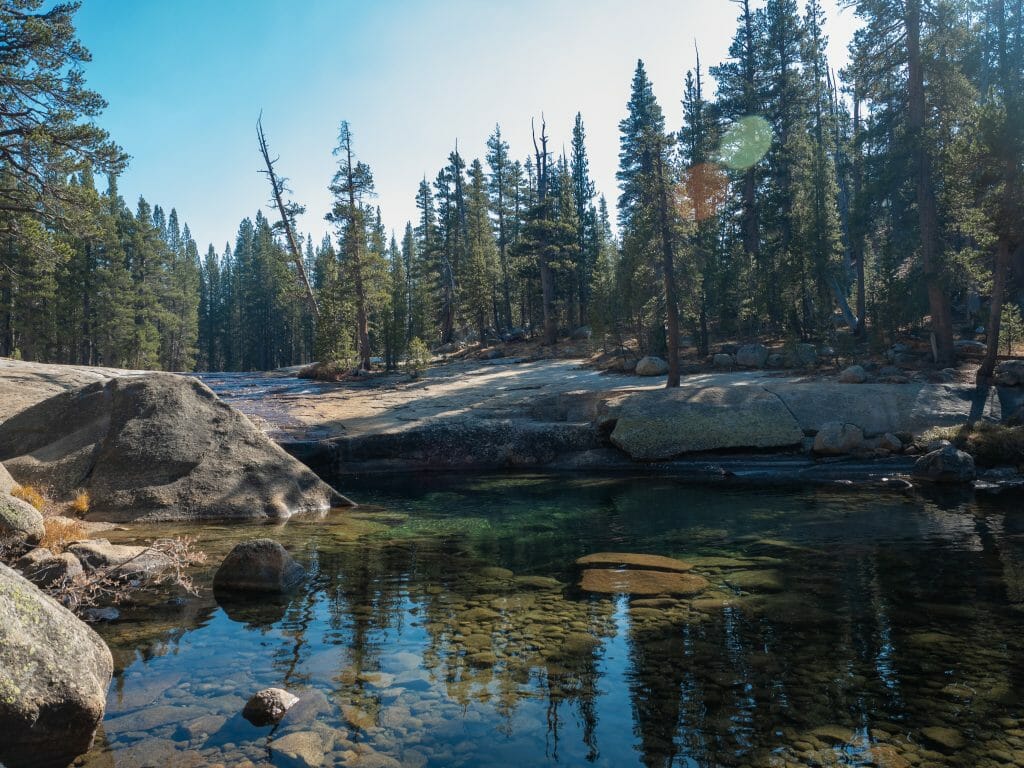
4 | Excalibur Boulder
From the Lembert Dome parking lot, walk across the road and following a short trail (5min) to a rather unassuming boulder and a nearby secluded swimming hole.
Thanks to the shade of thick trees, the water is insanely cold, but that (in combination with the fact that Excalibur Boulder isn’t even on Google Maps) likely means you’ll get this spot entirely to yourself. On a warm day (or even a chilly day in November, if you’re me), this is a fantastic place to go for a refreshing dip.
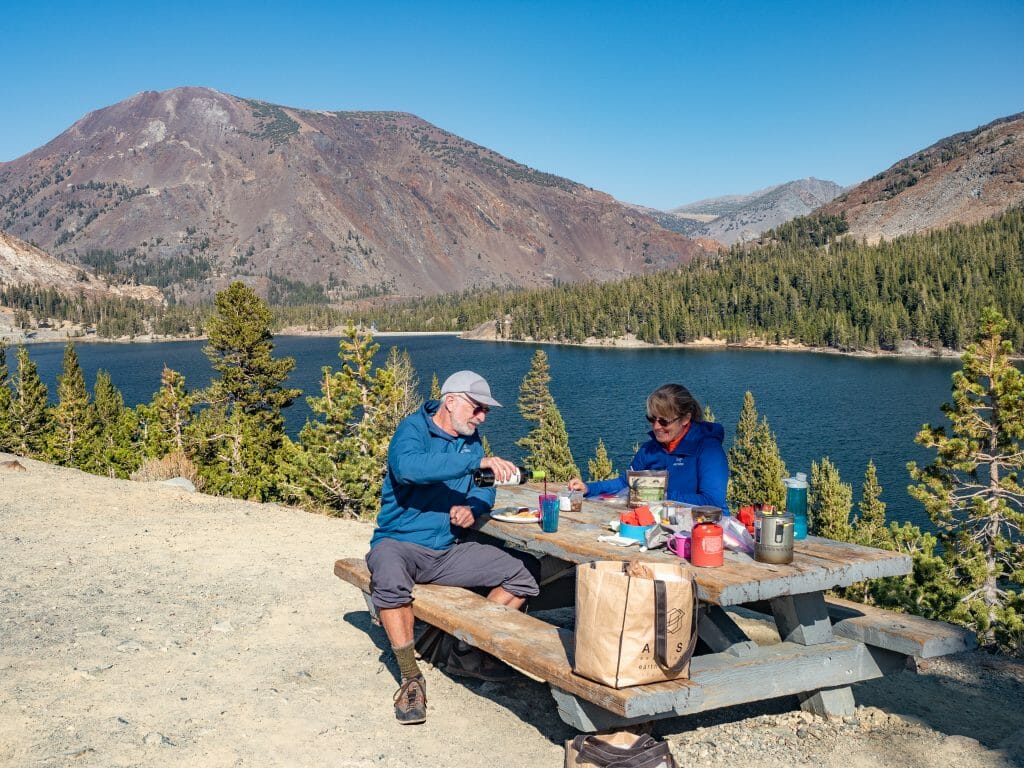
5 | Tioga Lake Outlook
Less than 10min up the road from Lembert Dome, you’ll actually pop out of the national park before reaching Tioga Lake Overlook, a scenic spot with information placards and several picnic tables situated just above the lake.
This is a really wonderful place to stop for lunch, the views spectacular and the crowds much lower than at other popular picnic areas within the park.
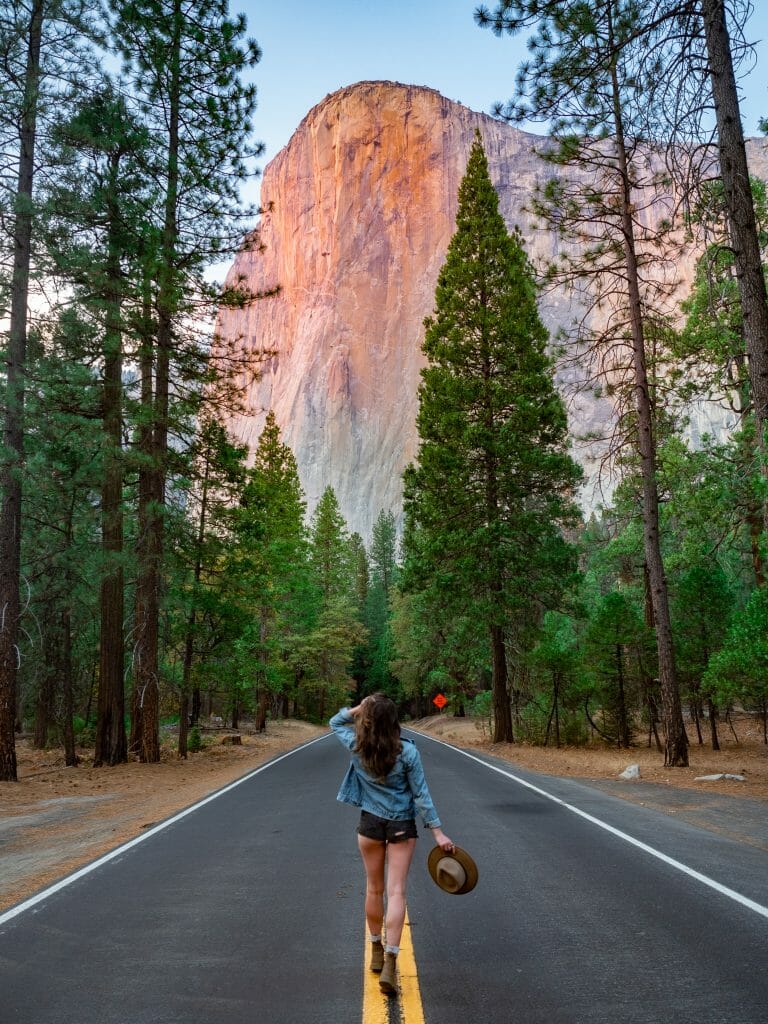
6 | Northside Drive
After lunch, re-enter Yosemite National Park via the Tioga Pass entrance and retrace the morning’s drive along Tioga Pass Road for 1hr before reaching a junction in Yosemite Valley and turning left onto Big Oak Flat Road. A further 15min brings you to Northside Drive, an unbelievably scenic stretch of road leading towards El Capitan’s massive granite face.
There are heaps of great spots to pull over and enjoy the view— the photo above was taken right at the El Cap Crossover, between Northside and Southside Drive. Even if you don’t get out of the car, though, this is my favourite road in the entire park and absolutely shouldn’t be missed!
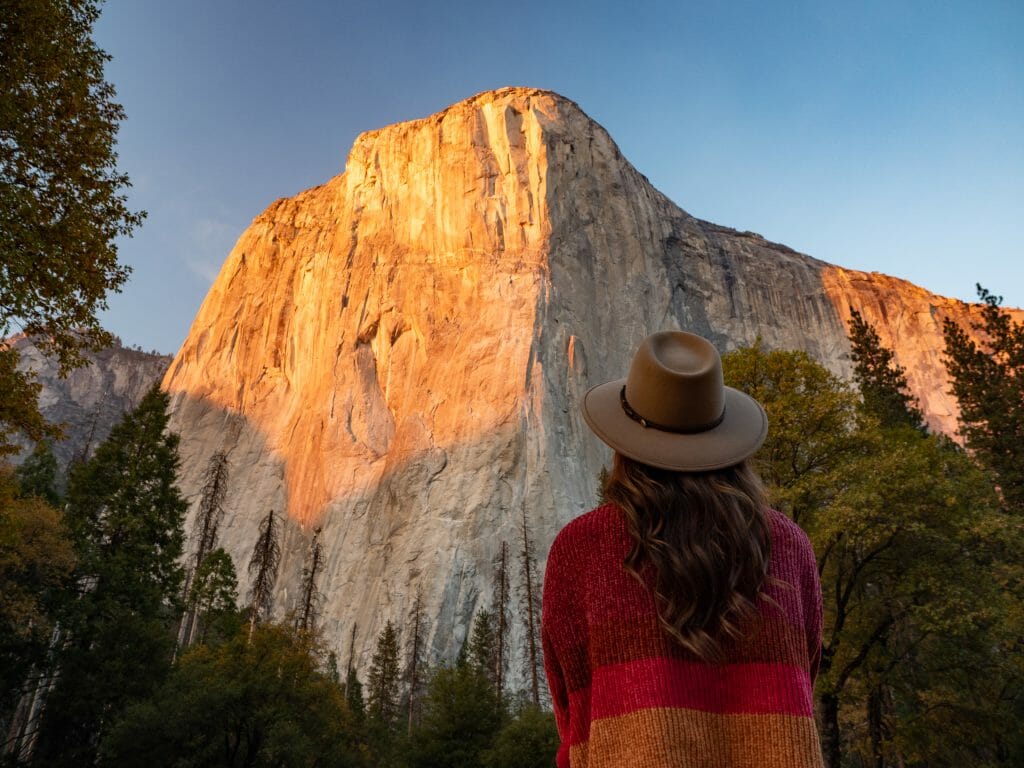
7 | El Capitan Meadow
From the El Cap Crossover (the split between Northside and Southside Drive), it’s only 5min up the road to El Capitan Meadow, another of my favourite views in Yosemite.
There is limited parking along the side of the road, but if you can find a spot, you’ll be rewarded with impossibly close views of El Cap from one side and an equally spectacular view of Cathedral Rocks from the opposite side of the road (pictured at the top of this post).
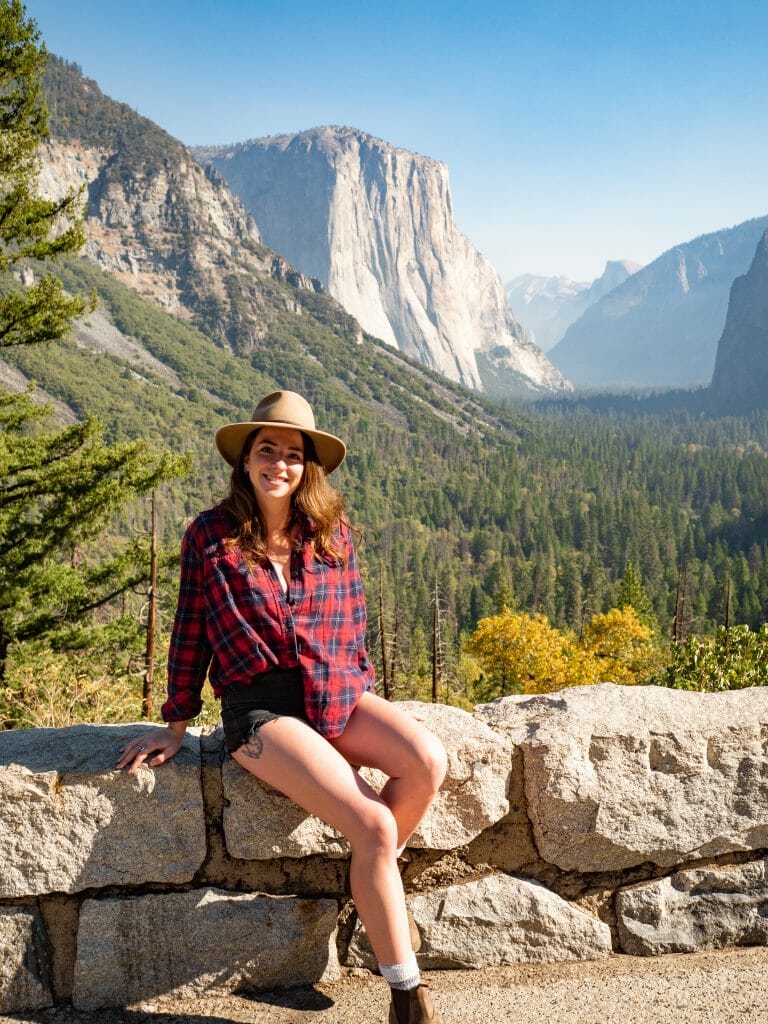
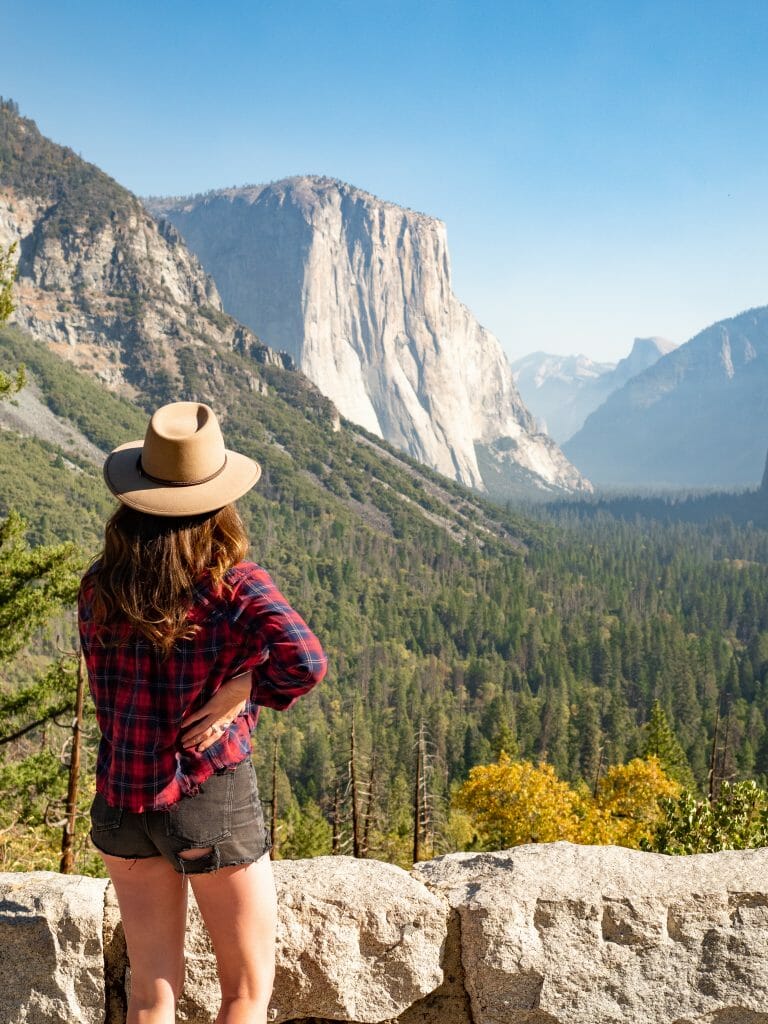
8 | Tunnel View
After driving the rest of the Northside/Southside Drive Loop beyond El Cap Meadows (allow 15min), drive back towards Big Oak Flat Road and then turn onto Wawona Road.
Just beyond the junction is Tunnel View, offering one of the most iconic lookouts over the Yosemite Valley onto both El Cap and Half Dome. There’s no real walking required to enjoy this view, so expect lots of people!
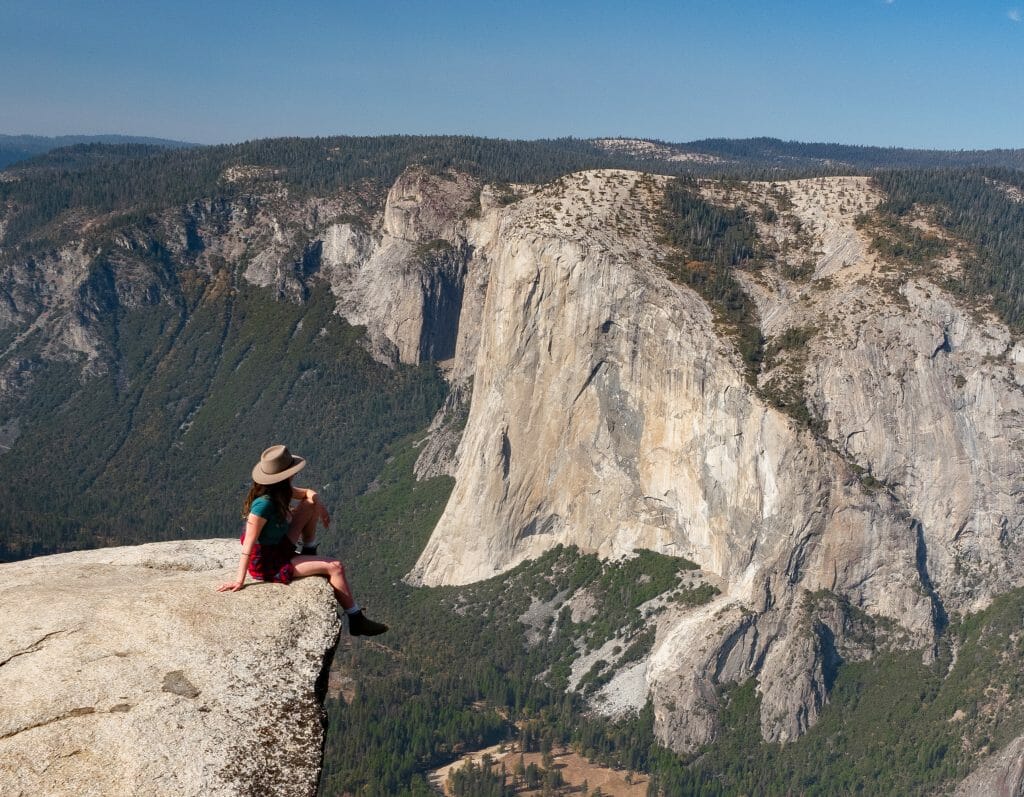
9 | Taft Point
3.5km / 2.2mi return | 115m / 375ft elevation gain | 1hr
Continuing from Tunnel View along Wawona Road until it eventually becomes Glacier Point Road, the shared trailhead for Taft Point and Sentinel Dome is about 30min away, but well worth the drive.
Taft Point is an incredible network of rocky outcrops, soaring ledges, and scenic viewpoints, offering amazing views of El Cap and one of the most staggering vantage points over the Yosemite Valley below. Perched (carefully) on the edge, you really get a sense for the scale of these rocks that few other spots offer— at 1065m (3500ft), Taft Point is actually higher than Glacier Point and one of the best places to take in the expanse of the entire park.
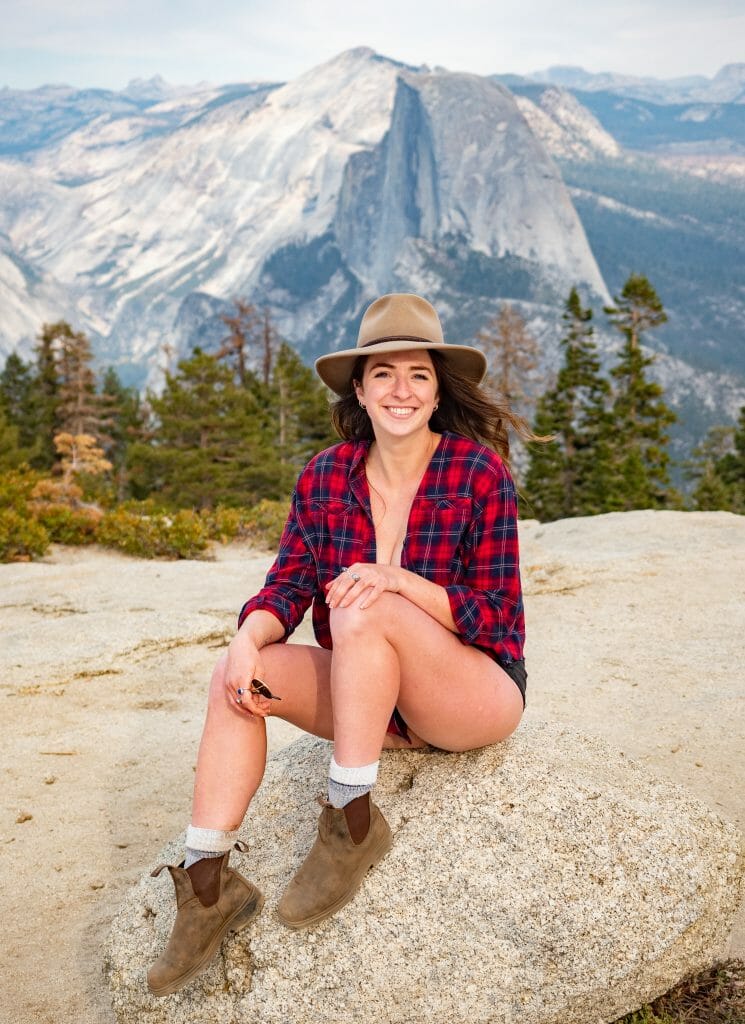

10 | Sentinal Dome
3.5km / 2.2mi return | 139m / 455ft elevation gain | 1hr
If time allows, it is definitely worthwhile to explore both Taft Point and Sentinel Dome (which share a trailhead)— the view is entirely different, with Taft Point poised in front of El Cap’s sharp nose and Sentinel Dome looking out over Half Dome and Cloud’s Rest, .
A trail also links Sentinel Dome to Glacier Point, so if you can manage a car shuttle or have time for the return hike, continue on foot a further 1.6km/1.1mi almost entirely downhill to Yosemite’s best known viewpoint (the trail is well-signed).
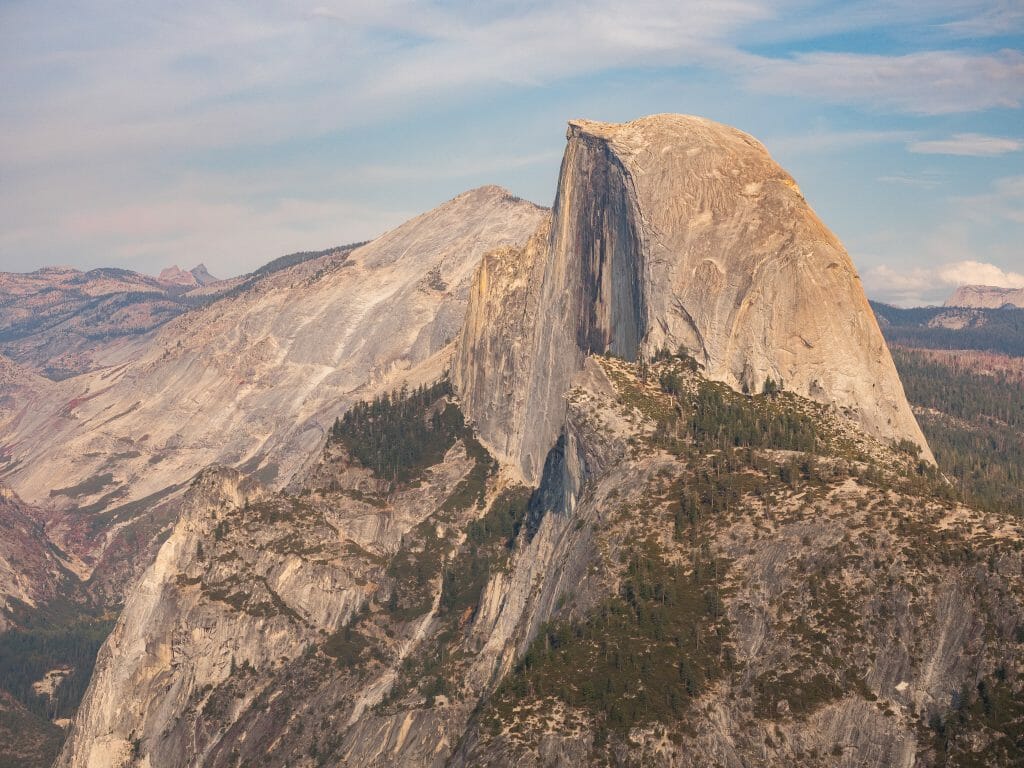
11 | Glacier Point
Yosemite’s most popular viewpoint is only a few minutes up the road, its massive, multi-tiered parking lot a clear indication of just how many people pile in for sunset. With that in mind, try to arrive early enough to secure both a decent park and a great vantage point to watch the sun light up the pale granite of Half Dome in a wash of pinks and purples— the insane colours of sunset are more than worth all of the jostling and irritation you may experience if visiting during peak season.
After enjoying last light at one of the most scenic spots in the entire park, allow 45min to get from Glacier Point back to the exit at Big Oak Flat (or slightly less if exiting via Arch Rock).
And now, on to the next adventure!
Explore more US National Parks & Public Land
THE ULTIMATE 1-DAY JOSHUA TREE NATIONAL PARK ITINERARY: 9 BEST HIKES & SCRAMBLES (POST-COVID)
THE ULTIMATE 1-DAY DEATH VALLEY NATIONAL PARK ITINERARY: 9 BEST HIKES & VIEWPOINTS (POST-COVID)
THE ULTIMATE 1-DAY ARCHES NATIONAL PARK ITINERARY: 17 BEST VIEWPOINTS & HIKES (POST-COVID)
